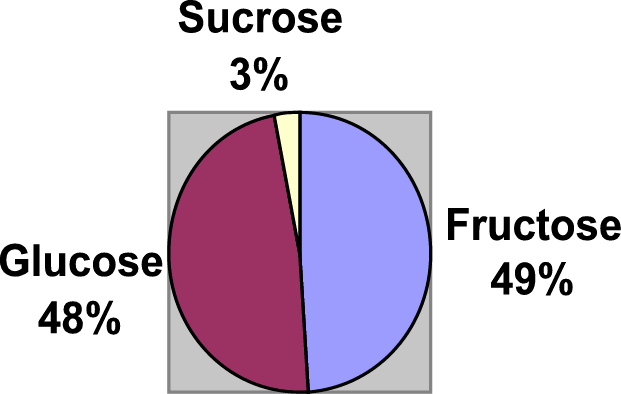|

Composition
USDA Data (detailed)
Composition by Percent
Sugars Serving
Sizes Nutrition
Labels Antioxidants
Phytochemicals
Ethnobotany
Learning Center
Overview:
 |
One
cup of blueberries contains 16% DV of fiber
|
 |
Blueberries
are a source of Vitamins A and C, potassium
and folate
|
 |
Blueberries
are very low in fat and sodium
|
Composition:
|
Nutrients |
|
Measurement |
Units |
| USDA
National Nutrient Database for Standard Reference |
(blueberries,
raw) Release 15 (August 2002) |
1/4
cup 36.g
(1.25
oz)
|
Amount/100g |
|
|
Food
energy |
20.00 |
56.00 |
kcal |
| Proximate |
Protein |
0.24 |
0.67 |
g |
|
Total
lipid (fat) |
0.14 |
0.38 |
g |
|
Carbohydrate
by difference |
5.09 |
14.13 |
g |
|
Ash |
0.08 |
0.21 |
g |
|
Water |
30.67 |
84.61 |
g |
| Minerals |
Calcium |
2.17 |
6.00 |
mg |
|
Copper |
0.02 |
0.06 |
mg |
|
Iron |
0.06 |
0.17 |
mg |
|
Magnesium |
1.81 |
5.00 |
mg |
|
Manganese |
0.10 |
0.28 |
mg |
|
Phosphorus |
3.62 |
10.00 |
mg |
|
Potassium |
32.25 |
89.00 |
mg |
|
Selenium |
0.22 |
0.60 |
mg |
|
Sodium |
2.17 |
6.00 |
mg |
|
Zinc |
0.04 |
0.11 |
mg |
| Vitamins |
Vitamin
C |
4.71 |
13.0 |
mg |
|
Thiamin |
0.02 |
0.05 |
mg |
|
Riboflavin |
0.02 |
0.05 |
mg |
|
Niacin |
0.13 |
0.36 |
mg |
|
Pantothenic
Acid |
0.03 |
0.09 |
mg |
|
Vitamin
B-6 |
0.01 |
0.04 |
mg |
|
Folate |
2.18 |
6.00 |
mg |
|
Vitamin
A, IU |
36.25 |
100.00 |
IU |
|
Vitamin
E |
0.36 |
1.00 |
mg
ATE |
g=grams
mg=milligrams kcal-kilokalories IU=International
Units ug=micrograms ATE=alpha tocopherol
equivalentUSDA
Data (detailed)
Composition
by Percent:
| Water |
84.61% |
| Protein |
0.67% |
| Ash |
0.21% |
| Lipids |
0.38% |
| Carbohydrates |
14.13% |
Sugars::
Antioxidants: The
USDA Human Nutrition Research Center on Aging in
Boston has developed an assay called ORAC (oxygen
radical absorbance capacity), which qualifies the
antioxidant capacity of foods. Fresh blueberries
have a high level of ORAC, 2400 per 100 grams.
(As a comparison, five servings of some fruits and
vegetables in a typical American diet score around
1600.
Phytochemicals:Ethnobotany:
Blueberries have been associated with
positive physiological and cosmetic benefits for
centuries. Here we list non scientific information
which although not endorsed by the USHBC, may be
of interest to researchers as a direction for further
research.
 |
Blueberry
Health and Nutrition traditions in China.
|
 |
Native
American and First Nations of Canada blueberry
health and medicinal traditions.
|
 |
Blueberry
health and nutrition in Russia and Central European
Traditions.
|
Serving Size based on 1 cup = 140 grams.
Container Size |
Servings Per Container |
1/2 pint |
1 |
12 oz |
2.5 |
6 oz |
1 |
8 oz |
1.5 |
1 pint |
2 |
1 quart |
4 |
22 oz |
4.5 |
5 lb |
18 |
10 lb |
32 |
20 lb |
65 |
|
|
Nutrition
Labels:
|
Blueberries
Raw
|
Blueberries
Frozen (Unsweetened
|
|
|
|
|
|
|
Learning
Center:
Eating
blueberries may help you remember where you placed
your car keys—important findings if you’d like to
keep Alzheimer’s and heart disease at bay.
The research
was presented Monday, August 19, at the ACS national
meeting in Boston.
In one
study, Jim Joseph, director of the neuroscience
laboratory in the USDA Human Nutrition Center (HNRCA),
fed blueberry extractions—the equivalent of a human
eating one cup of blueberries a day—to mice and
then ran them through a series of motor skills tests.
He found
that the blueberry-fed mice performed better than
their control group counterparts in motor behavioral
learning and memory, and he noticed an increase
in exploratory behavior. When he examined their
brains, he found a marked decrease in oxidative
stress in two regions of the brain and better retention
of signal-transmitting neurons compared with the
control mice.
The chemical
that appears responsible for this neuron protection,
anthocyanin also gives blueberries their color and
might be the key component of the blueberry’s antioxidant
and anti-inflammatory properties. Blueberries, along
with other colorful fruits and vegetables, test
high in their ability to subdue oxygen free radicals.
These oxygen radicals, which can damage cell membranes
and DNA through a process known as oxidative stress,
are blamed for many of the dysfunctions and diseases
associated with aging.
These
findings could become increasingly important as
the U.S. population ages. It is projected that by
2050, more than 30% of Americans will be over 65
and will have the decreased cognitive and motor
function that accompanies advanced age. Joseph is
currently testing the effects of blueberries on
humans. Preliminary results show that people who
ate a cup of blueberries a day have performed 5–6%
better on motor skills tests than the control group.
 |
For
a 5 A Day Guide to fruit serving sizes log onto
http://www.cdc.gov/nccdphp/dnpa/5aday/pdf/whats_a_serving.pdf
Based
on the 5 A Day guide following are servings
for blueberries.
One
serving of Blueberries = one-half cup
One
serving of Blueberry juice = 3/4 cup
(6 oz.) of 100% juice
One
serving of dried Blueberries = 1/4
cup
|
|